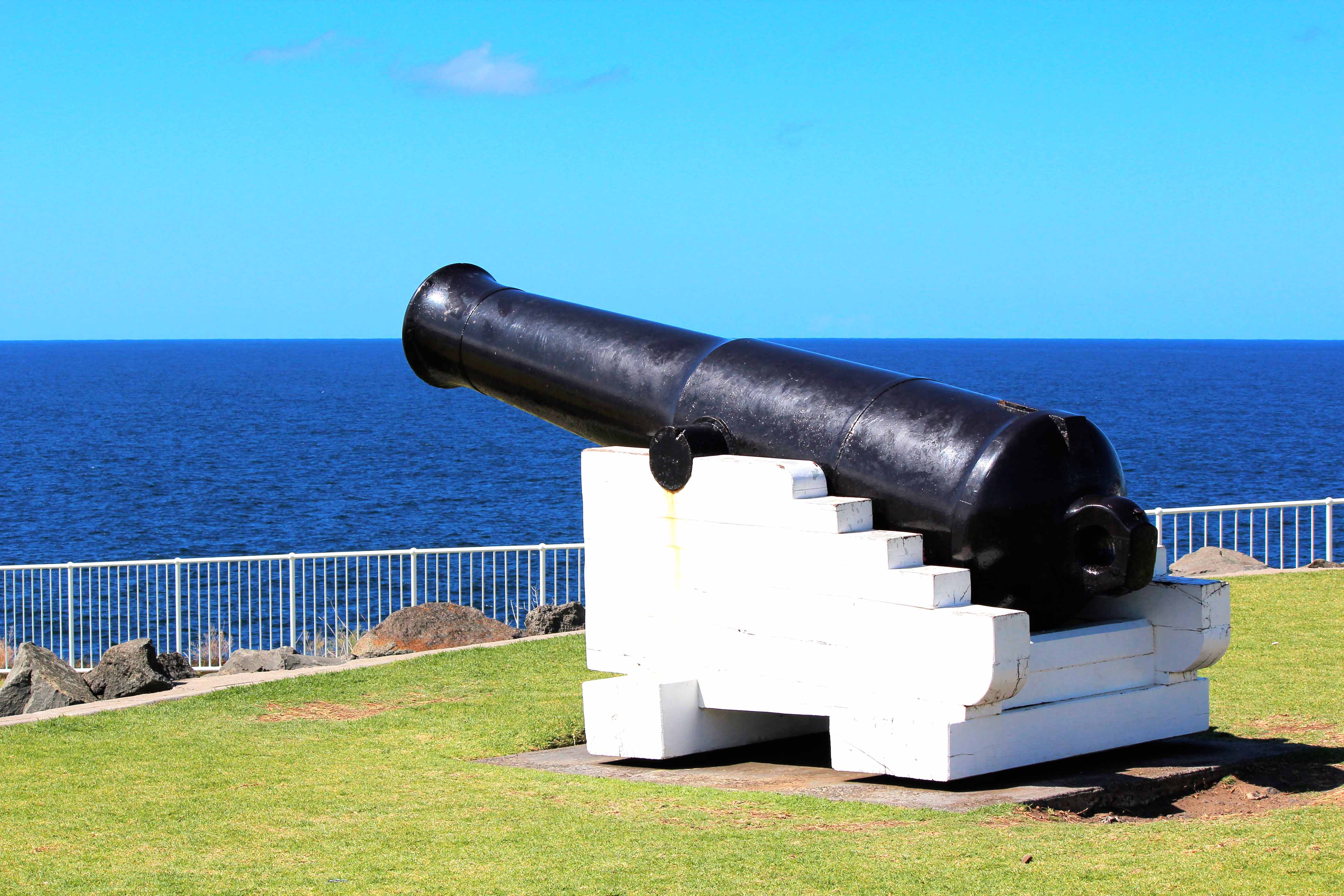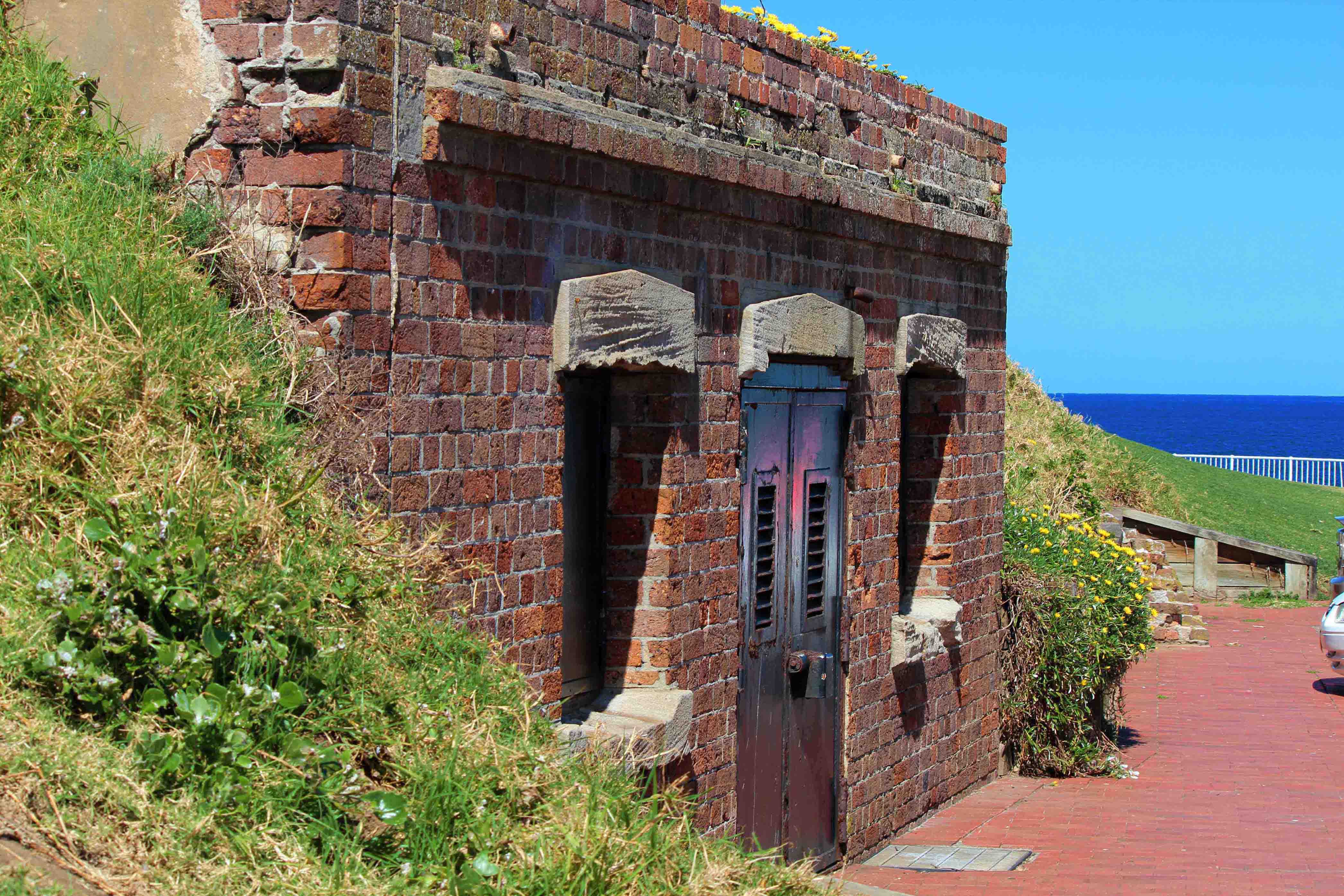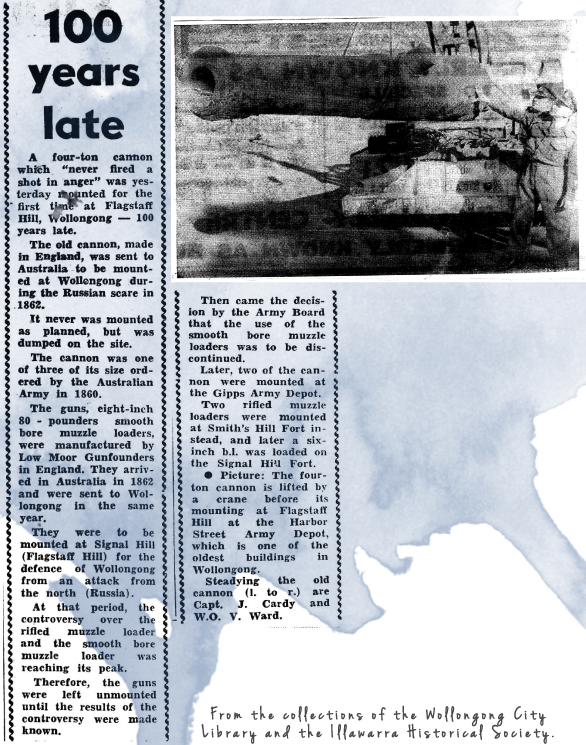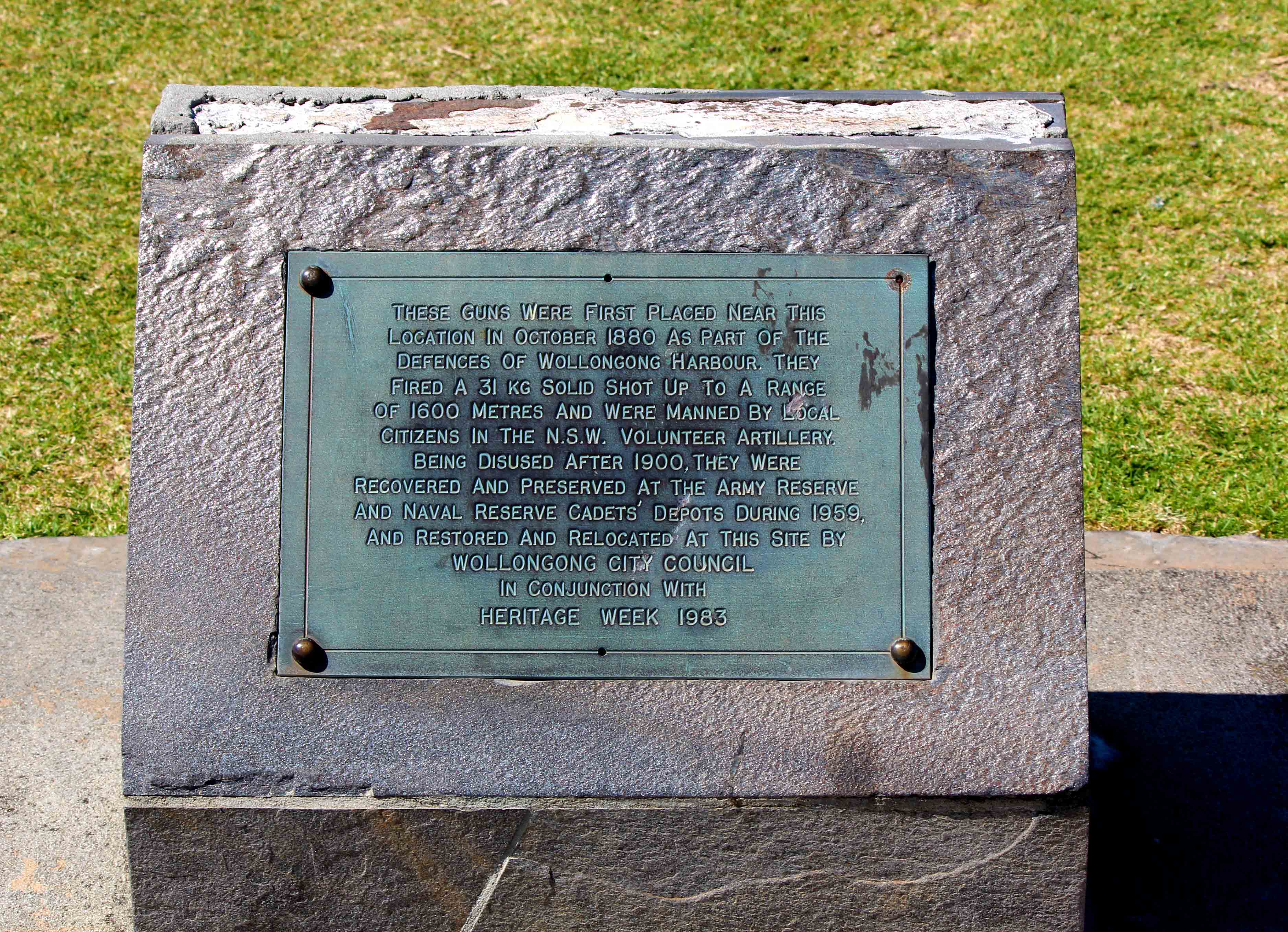
Name: Flagstaff Hill

Other names: Stockade Point, Signal Hill
Date built: 1890-1891
Coordinates: 34° 25′ 19.28″ S, 150° 54′ 34.83″ E
Flagstaff Hill Fort was built between 1890-1891. The fort was intended to provide a deterrent to a possible Russian attack upon Wollongong Harbour, providing first-line defence against attacking forces. It was dug out of the hill , then brick walls were built

inside and earth was placed over the tunnels. There had already been some use of this site for defence purposes.
In the late 1800’s The Royal Navy and Legislative Assembly of NSW believed that in response to the end of the Crimean War, enemy ships may threaten Australia’s coastal ports. At this time the main ports were Sydney, Newcastle and Wollongong. The authorities thought enemy ships would demand coal in return for not shooting and invading the country. In 1879 three 68 pounder Crimean War Relics were relocated from Sydney to Wollongong and placed on Flagstaff Hill. The cannons were designed to fire a shell weighing almost 30kg a distance of 1.6km. They lay

unused at the harbour for 18 months until the local volunteer
artillery group finally placed them. Though these cannons were installed, by 1887 they were regarded as useless and insignificant, as they had a short range and would not adequately meet the threat that was posed.
The solution to this issue was to build a disappearing gun, with underground room for supplies, ammunition and shelter. In 1890 a 5.3 tonne gun was positioned in a concrete pit near the peak of Flagstaff Hill. There were several weapons like this installed all around the world, in countries like Canada, the United Kingdom, United States and South Africa. Australia was lucky to have this kind of advanced technology and they had more than any other country.
A disappearing gun (or disappearing carriage) is a heavy weapon, which was mainly used in coastal areas. It sat in a pit where it could be retracted down hidden from view while being reloaded, and then moved up out of the pit and fired.
Disappearing guns had several advantages:
- Being in a pit protected the gun crew from direct fire
- With its guns retracted in the pit it made it much harder for ships to spot and attack
- They were more economical to construct (as fortified walls around the cannon did not need to be built)
Disadvantages:
- The time taken for the gun to go up and come back down reload and shoot again slowed the rate of fire. Surviving records indicate a rate of 1 round per 1-2 minutes for an 20cm gun, significantly slower than less complicated guns
- The gun could not be aimed whilst in the lowered position
In 1893 the threat of a Russian attack vanished. For Heritage week in 1983, the cannons were restored and relocated at the site by Wollongong City Council.



